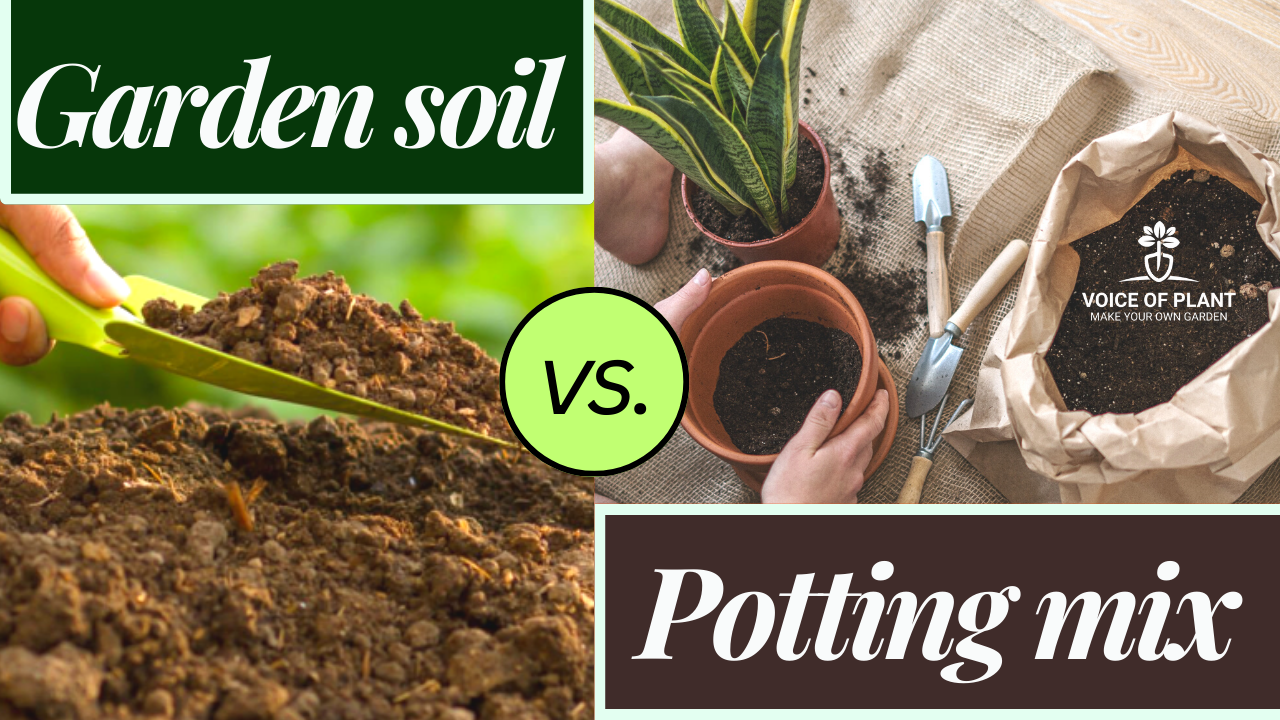Understanding Potting Mix: A Gardener’s Guide
In gardening, deciding between potting mix and garden soil can determine whether your plants grow well or not. Let’s explore what potting mix is and how it’s different from garden soil.
“Healthy soil is the foundation of healthy plants and a healthy environment.”
Potting Mix vs. Garden Soil: Unveiling the Differences
1. The Composition
Potting mix, often referred to as potting soil (soil mix), is a specialized mixture prepared for container gardening. It is prepared by gardening experts to provide an ideal environment for potted plants. Unlike garden soil, which is found naturally in your outdoor space, potting mix is a man-made soil-mixture customize to the specific needs of potted plants.
2. Key ingredients
Potting mix typically comprises a combination of organic and inorganic materials. These ingredients may include:
- compost – (cow dung compost, vermicompost, leaf compost)
- sand
- coco peat
- neem cake powder
- bone meal
- vermiculite
- perlite
- fungicide
3. Drainage and Aeration
A big difference between potting mix and garden soil is how well they let water and air move around.
- Potting mix is made to let water drain well and give plant roots plenty of air. This helps roots grow strong and avoids them sitting in water.
- Garden soil might not let water drain as well, so it is not the best choice for potted plants.
4. Nutrient levels
“Garden soil typically has plenty of nutrients due to natural processes over time.”
- On the other hand, potting mix is purposefully designed to provide a steady release of necessary nutrients over time to ensure that your potted plants get the nutrition they require.
5. Pest and disease resistance
Potting mix is good because it is less likely to have pests and plant diseases compared to garden soil. Garden soil can sometimes have harmful things that can harm your plants, but potting mix is treated to lower the chances of that happening.
Making the right choice for your garden
Now that you understand the fundamental differences between potting mix and garden soil, it is time to make an informed decision for your gardening endeavors. Here are some quick tips:
Consider mixing both
Mixing both potting mix and garden soil can be beneficial in certain situations. This combination offers the advantages of both, providing your plants with necessary nutrients and good drainage. It is a balanced approach to support healthy plant growth.
1. Use potting mix for container gardening
If you are planning to grow plants in pots, containers, or indoor settings, opt for potting mix. It is superior drainage, aeration, and reduced risk of pests make it the perfect choice for container gardening.
2. Stick to garden soil for outdoor gardening
For outdoor garden beds or in-ground planting, garden soil is the natural choice. It is rich in nutrients and provides a suitable environment for your garden plants to thrive.
Conclusion
In conclusion, knowing how potting mix and garden soil are different is really important for your gardening success. So, choose the one that fits your needs best, and you will be on your way to growing a healthy and thriving garden.
Read here:
How to make best soil-mixture for plants
Follow our Social media channel:
1. Voice of Plant – YouTube Channel
2. Voice of Plant Facebook Page
3. Instagram Voice of Plant Channel
Happy Gardening!
